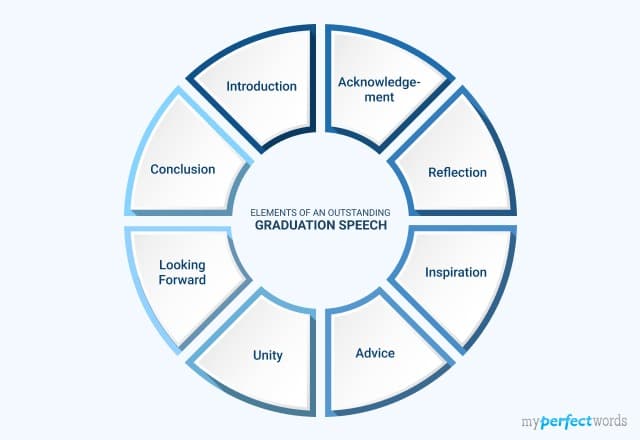

Presentations are a common part of our personal and professional lives. Whether you're a student, an employee, or an entrepreneur, learning the art of presentations is a valuable skill.
A well-crafted presentation speech can inspire, inform, and engage your audience, leaving a lasting impact.
So how can you craft an engaging presentation speech?
In this guide, we will walk you through the process of creating and delivering a compelling presentation, step by step. From writing your speech to mastering public speaking techniques, we've got you covered.
So, let's dive in!
On This Page![]()
- 1. What is a Presentation Speech?
- 2. How to Write a Presentation Speech?
- 3. Ways to Start a Presentation Speech
- 4. How to End a Presentation Speech?
- 5. Presentation Speech Examples
- 6. Tips for Making Your Presentations More Engaging
- 7. Presentation Speech Topics
What is a Presentation Speech?
A presentation speech is a type of public speaking where the speaker formally delivers information, ideas, or proposals to an audience. This type of speech is typically structured to introduce a topic, convey key points clearly, and engage listeners effectively.
The goal of a presentation speech is to inform, persuade, or entertain the audience. They often use visual aids, storytelling, and other techniques to improve understanding and retention.
Main Components of a Presentation Speech
The key elements that set a presentation speech apart are its intentionality and structure. Here's a breakdown of these crucial aspects:
- Purpose
Every presentation speech has a clear purpose, which could be:
- To inform
- To persuade
- To entertain
- To inspire and motivate
Understanding your purpose is the foundation upon which you build your speech.
- Structure
A presentation speech typically follows the basic speech format that includes an introduction, body, and conclusion. The introduction lays out the context, the body conveys the main content, and the conclusion reinforces the key points.
- Audience
Effective presentation speeches are tailored to the needs and expectations of the audience. Knowing your audience helps you choose the right tone, style, and content.
- Visual Aids
Presentation speeches often make use of visual aids like slides, props, or multimedia elements to enhance the message and keep the audience engaged.
How to Write a Presentation Speech?
Here's a step-by-step guide to help you effectively write a presentation speech.
Step 1: Determine the Audience
The first step in crafting a presentation speech is to understand your audience. Consider their background, knowledge, interests, and expectations. Are they experts in the subject, or are they new to it? This information will shape the tone and depth of your speech.
Step 2: Choose a Topic
Select a topic that aligns with both your expertise and the interests of your audience. Your topic should be engaging and relevant. It could be a current issue, a problem-solving solution, or a subject of general interest. Make sure your passion for the topic shines through.
Step 3: Research and Gather Information
To build a strong speech, gather credible information from a variety of sources. Use books, articles, online resources, and expert interviews. Keep track of your sources and make note of key statistics, quotes, and examples that support your message.
Step 4: Make an Outline
Creating a structured outline for your presentation speech is essential for keeping your message organized and ensuring that your audience can follow your points easily.
Here's how to construct a well-organized presentation speech outline:
Presentation Speech Outline
Presentation Speech Introduction
Presentation Body (Three-Point Structure)
Visual Aids: Introduce visual aids at appropriate points to enhance your message. Presentation Speech Conclusion
Q&A Session (if applicable): Mention the Q&A session and invite questions from the audience. |
Step 5: Review and Revise
After you've written your speech, review it for clarity, coherence, and conciseness. Here are the steps you should take for reviewing your speech:
- Make sure that each point supports your main message and is easy to understand.
- Check for grammar and spelling errors.
- Practice your speech in front of a mirror or with a friend. Pay attention to your delivery, pacing, and timing. Make necessary revisions based on your practice sessions.
Remember that a well-written presentation speech not only conveys your knowledge but also connects with your audience on a personal level. Your goal is to inform, persuade, or inspire, and the steps outlined here will help you achieve just that.
Ways to Start a Presentation Speech
Now that you’ve written your presentation and its content, the time has come to deliver your speech. If you're thinking how to start a presentation speech that grabs your audience's attention right from the beginning we have that covered for you.
Here are some simple yet powerful ways to hook your readers from the beginning:
- Ask a Thought-Provoking Question: Start with a question that makes your audience think about the topic you're going to discuss.
For example, "Have you ever wondered how technology will shape our future?"
- Tell a Story or Anecdote: Share a brief story or personal anecdote related to your topic. Stories capture attention and make your speech more relatable.
For instance, "When I was a child, I once..."
- Use a Surprising Fact or Statistic: Begin with an interesting fact or statistic that will surprise your audience.
For example, "Did you know that over 90% of people use their smartphones within 10 minutes of waking up?"
- Start with a Relevant Quote: Begin with a quote from a notable person that relates to your topic. Quotes can inspire and set the tone for your speech.
For instance, "Steve Jobs once said, 'Your work is going to fill a large part of your life, and the only way to be truly satisfied is to do what you believe is great work.'"
- Pose a Problem and Offer a Solution: Introduce a problem your audience can relate to, and then hint at the solution you'll discuss.
For example, "Many of us struggle with time management. Today, I'll share some effective strategies to help you maximize your productivity."
How to End a Presentation Speech?
Ending your presentation speech effectively is just as important as starting strong. Here’s how to wrap up with impact:
- Summarize Key Points: Recap the main ideas you've discussed. Remind your audience of the key takeaways to reinforce your message.
- End with a Memorable Statement: Leave a lasting impression by concluding with a powerful statement, a thought-provoking question, or a call to action related to your topic.
- Thank Your Audience: Express gratitude for their time and attention. A simple "Thank you for listening" goes a long way in showing appreciation.
- Invite Questions (if applicable): If there’s time for questions, invite the audience to ask any they may have. This encourages engagement and shows you value their input.
- Leave Them Thinking: End with something that makes your audience reflect on what they've learned or consider how they might apply your ideas in their own lives or work.
Presentation Speech Examples
Taking help from good and structured presentation speeches will allow you to write and deliver the address smoothly. Here are some presentation speech samples for students that can help you write a well-structured presentation.
Famous Presentation Speeches
Here are five examples of famous presentation speeches that have made a significant impact:
- Al Gore - An Inconvenient Truth (2006): Al Gore's presentation used slides and visuals to raise awareness about climate change, documented in the film "An Inconvenient Truth."
- Susan Cain - The Power of Introverts (2012): Susan Cain's TED Talk celebrated introverted personalities and their strengths in a society that often values extroversion.
- Bill Gates - Innovating to Zero! (2010): Bill Gates' TED Talk emphasized the urgency of reducing carbon emissions to zero to address climate change, proposing innovative solutions.
- Sheryl Sandberg - Why We Have Too Few Women Leaders (2010): Sheryl Sandberg's TED Talk highlighted barriers women face in leadership roles and urged women to pursue their ambitions.
- Tony Robbins - Why We Do What We Do (TED Talk, 2006)?: Tony Robbins' TED Talk explored the psychology of motivation and behavior, offering insights into personal and professional development.
Tips for Making Your Presentations More Engaging
Here are some additional tips for giving better presentations:
- Use expressive body language: Gestures and movement can help highlight important points and keep your audience engaged. It shows your enthusiasm and makes your presentation more dynamic.
- Adjust your voice tone and pace: Varying your voice tone and speaking pace adds emphasis and maintains listener interest. It's like adding melody to your speech to keep things lively and engaging.
- Manage nervousness with relaxation techniques: Before your presentation, try deep breathing or visualization exercises to calm your nerves. Feeling relaxed helps you speak confidently and connect better with your audience.
- Add humor or anecdotes: A well-placed joke or personal story can lighten the mood and make your presentation memorable. It also helps to connect with your audience on a more personal level.
- Use visuals wisely: Visual aids like slides or charts should complement your speech, not replace them. Use them to illustrate key points visually and help reinforce understanding.
- Maintain eye contact: Look at your audience while speaking. It builds trust and keeps them engaged. It shows you're speaking directly to them, not just reading off slides.
- Speak naturally, avoid reading: Practice your presentation enough that you can speak comfortably without reading word-for-word from slides or notes. Natural speech is more engaging and shows your expertise.
- Stay focused and present: Practice mindfulness techniques to stay grounded and focused during your presentation. Being present helps you react to audience cues and adjust your delivery accordingly.
Presentation Speech Topics
Now that you know how to write and deliver an engaging presentation, you may be wondering about a topic to speak on. You need a strong and interesting topic to make your presentation speech impactful.
Here are some presentation speech ideas to help you out:
- The Impact of Artificial Intelligence on the Job Market
- Climate Change and Sustainable Practices
- The Power of Emotional Intelligence in Leadership
- The Art of Time Management
- The Future of Renewable Energy
- The Psychology of Decision-Making
- Mental Health Awareness and Reducing Stigma:
- Innovations in Space Exploration
- The Art of Negotiation
- The Role of Music in Society
Need more ideas for your presentation speech? Our informative speech topics blog lists 100+ topics that are sure to inspire your next presentation.
To Conclude, remember, creating a successful presentation speech comes down to careful planning, delivering with enthusiasm, and understanding your audience. Outline your main points clearly, use visuals that grab attention, and practice confident body language to keep everyone engaged.
Need further help in making your presentation speech? No worries!
MyPerfectWords.com is a professional speech writing service that provides versatile academic help. Whether you have a speech or a research paper to write, come to us. We have a team of experts to help you with all your writing needs.
Place a do my essay for me request now to get expert help.
Frequently Asked Questions
How to start a presentation speech in class?
To start a presentation speech in class, begin with a captivating opening like a question, story, or surprising fact related to your topic. This grabs your classmates' attention and sets the tone for your presentation.
How to introduce yourself in a presentation as a student?
Introduce yourself briefly by stating your name, grade, or class, and any relevant information about your background or interests related to the presentation topic. Keep it concise and focus on how your experience or perspective adds value to your presentation.
What are some effective presentation starting words?
Here are some good presentation starting words:
- "Have you ever wondered..."
- "Imagine a world where..."
- "Today, I'm going to talk about..."
- "Let's dive into..."
- "I'd like to begin by..."
How to speak during a presentation?
Speaking during a presentation involves several key techniques:
- Speak clearly and at a moderate pace to ensure your audience can follow.
- Use varied tones to emphasize important points and maintain interest.
- Practice pauses to allow your audience time to digest information.
- Maintain eye contact to build rapport and keep listeners engaged.
- Use gestures and body language to enhance your message and express enthusiasm.
What are some 'How to' speech presentation topics?
'How to' speech presentation topics can include practical skills or processes that are informative and engaging:
- How to effectively manage your time in college
- How to improve your study habits
- How to improve your public speaking skills as a student
- How to conduct meetings in the workplace
- How to develop strong leadership skills
- How to create an effective business plan
- How to create a budget and stick to it
- How to improve customer service skills in your role
- How to build a basic website
- How to negotiate a salary or contract effectively

Write Essay Within 60 Seconds!
Use our AI tool to generate high quality essay-18976.png&w=256&q=75&dpl=dpl_Gdsvp7W41w43ZdA5Qu4MrGDa9Trz)
WRITTEN BY
Amanda M.
Columbia journalism grad writing speeches. I craft clear, quotable messages for media moments.
Keep reading
The 10 Key Steps for Perfect Speech Writing

Understanding Speech Format - Simple Steps for Outlining
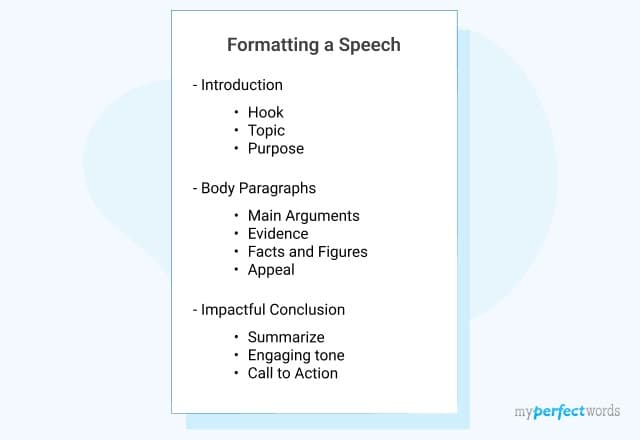
How to Start A Speech - 13 Interesting Ideas & Examples
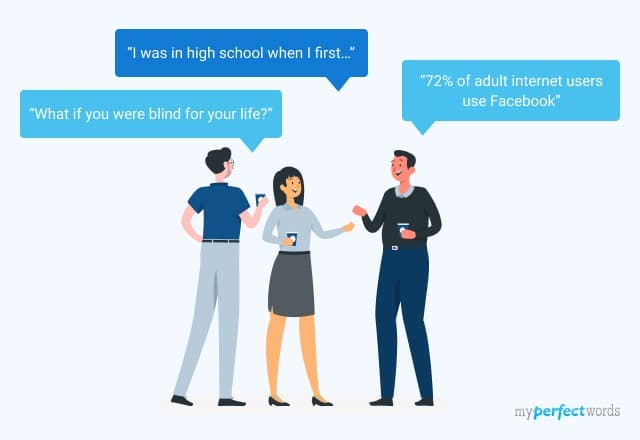
20+ Outstanding Speech Examples for Your Help
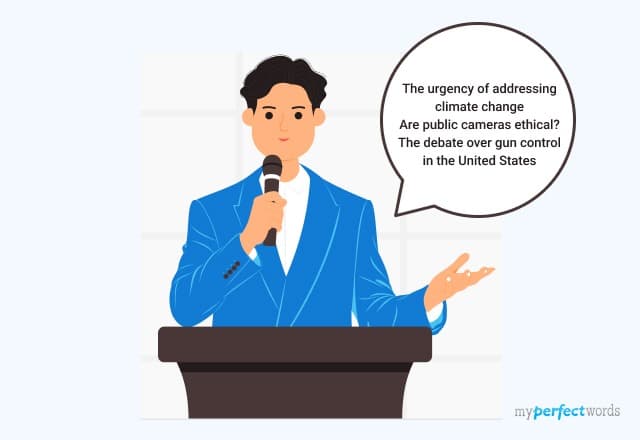
Common Types of Speeches that Every Speechwriter Should Know
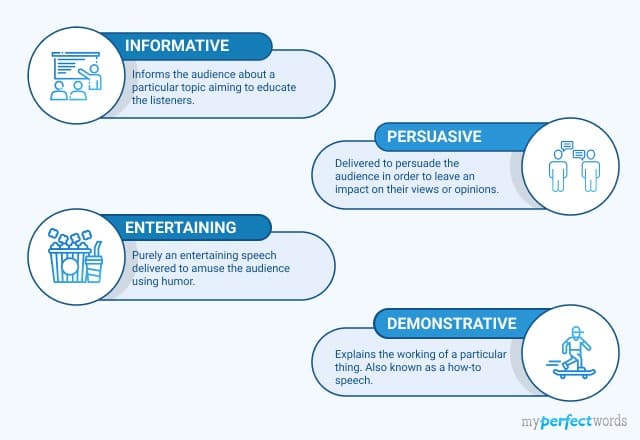
Good Impromptu Speech Topics for Students
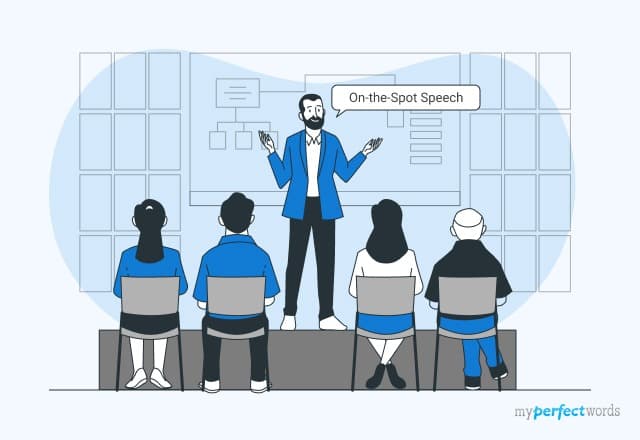
Entertaining Speech Topics for Your Next Debate
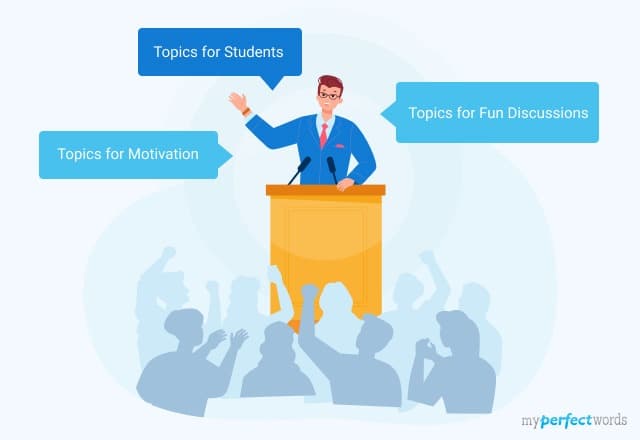
Understanding Special Occasion Speech: Types, Steps, Examples and Tips

Introduction Speech- Tips & Examples
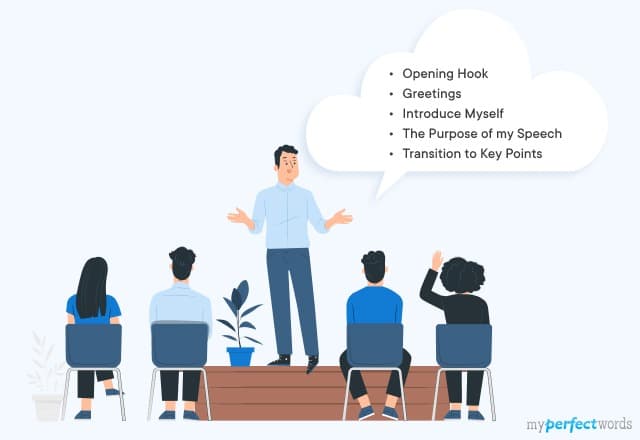
How to Write A Good Acceptance Speech?

Commemorative Speech - Writing Guide, Outline & Examples
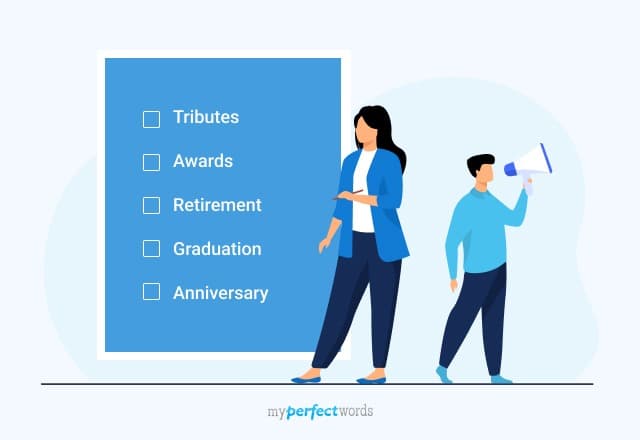
Farewell Speech | Writing Tips & Examples

How to Write an Extemporaneous Speech? A Step-by-Step Guide

A Graduation Speech Writing Guide with Examples
